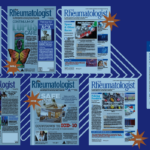A storm has been brewing down the street from my office. It is a David & Goliath dispute, pitting young children and their families against a renowned pediatric institution, Boston Children’s Hospital. It concerns the fate of a half-acre swath of green space, the Prouty Garden, replete with meandering paths, fountains and a towering redwood tree that provides ample shade on hot sunny days. Designed by the Olmsted brothers, progeny of the preeminent American landscape architect, Frederick Law Olmsted, this lush oasis sits smack dab in the middle of the hospital’s busy medical campus, where it has served as a healing space for its youngest patients and their families, including children facing major surgeries, battling leukemia or myriad other illnesses, “a place you can go to just get away from all of it.”1
Hospital administrators are seeking permission from state regulators to raze the garden, the hospital’s last remaining open space, to make way for a new 11-story building that would house more patient beds, a new intensive care unit, surgical operating suites and several magnetic resonance imaging machines.
Although these are worthy goals that serve to advance medical progress, they are being met with stiff resistance. Supporters of the garden emphasize its magical qualities, how its luxuriant surroundings enable the most vulnerable patient, the critically ill child, to garner the strength needed to fight the medical battles that loom ahead.2
Yet the garden has the misfortune of being the last remaining open space in a very crowded medical area.
Windows on the World
The fate facing the Prouty Garden raises the issue of whether surroundings influence how patients recover from illness. Can nature nurture?3 Is it critical to consider landscaping and interior decor when designing hospitals and other places of healing? Can the appearance of the building, the ward, the patient’s room, influence a patient’s outcome? Should administrators be more concerned about the size of a patient’s room window than about their television channel offerings?
It seems that our gaze can impact our sense of well-being. When studying responses to outdoor environments, most Western cultures show a preference for natural scenes that include vegetation and water over urban views that lack these elements. Because most natural views seem to elicit positive feelings, reduce fear and inhibit stressful thoughts, it has been proposed that natural surroundings might foster restoration from anxiety or tension.4 Yet not every healthcare facility has the wherewithal or the space to create luxuriant garden space, so are there other ways to integrate nature into the healing process? How about a room with a view?


